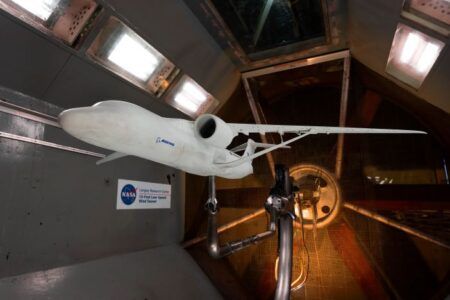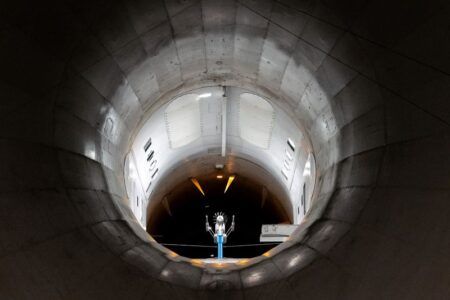Electra.aero is to start a wind tunnel test program for its blown wing short take-off and landing aircraft after receiving almost US$2 million from the US Army to fund the research.
Virginia, USA-based Electra’s electric short take-off and landing (eSTOL) aircraft uses a combination of blown lift and eight distributed electric motors to significantly increase wing lift. This enables take-offs and landings with ground rolls as short as 150ft (45m) and reduces noise and fuel use compared to conventional aircraft and helicopters, according to Electra.
The company envisions several different variant aircrafts for the concept, including a nine-passenger aircraft capable of flying at speeds of 200mph (320km/h) and up to distances of 500 miles (800km). It has also been working with the US Air Force to develop a full-scale pre-production prototype eSTOL with US$85 million of funding under the AFWERX Agility Prime Program.
This latest contract from the US Army will see Electra test in a wind tunnel a prototype aircraft configured for military logistics use in contested environments.
A military logistics variant of its eSTOL would use a hybrid-electric powertrain to ensures ranges beyond 1,000 miles (1,600km) for national security applications without the need for battery charging stations.
The company has been flight testing a two-seat experimental technology demonstrator aircraft that uses the blown-lift concept called EL-2 Goldfinch since November.
The powered wind tunnel testing will advance Electra’s novel aerodynamics database for use in performance analysis, simulator, and control law development. Data from the wind tunnel tests will be combined with results from ground tests and the ongoing flight test program to help guide the design and development of Electra’s production aircraft.
Ben Marchionna, Electra’s director of technology and innovation said, “There is a substantial benefit to employing the right-sized aircraft for a given payload-range mission.
“It is a very effective method to substantially reduce fuel use – or operational energy – in theater, which really matters for enabling distributed operations in contested locations. Many of the most deployed military logistics solutions in use today are flown well below their intended payload capacity.
“Our eSTOL aircraft can fulfill these missions while using dramatically less fuel, providing much more range, operating at significantly reduced noise levels, and utilizing the same constrained operational ground footprints. It’s an extremely compelling capability and we’re thrilled to be working with the Army team to advance this key national security technology.”





